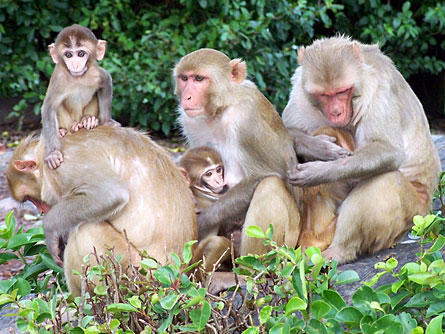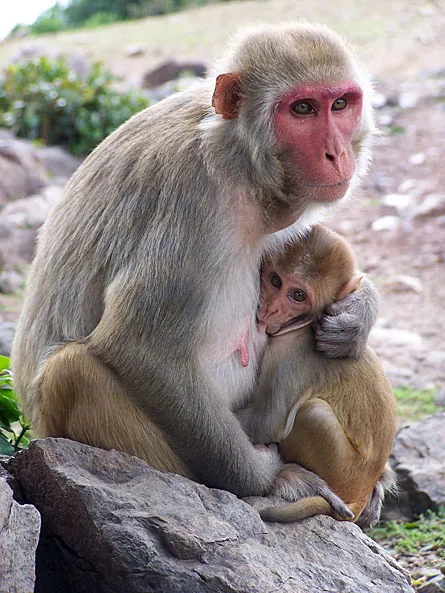Baby screams. Onlookers glower. Mom gives in — even when she’s a monkey.


Rhesus macaque mothers are about twice as likely to let a howling infant have its way during very public tantrums than during more private moments, says Stuart Semple of Roehampton University in London.
Not a bad decision on mom’s part. A baby rhesus monkey makes a high-pitched, grating shriek that Semple calls “pretty harsh stuff.” Onlookers get restless, and mom and the unhappy baby become 30 times more likely to suffer aggression from a bystander during a crying bout than they would in quiet times, Semple and his colleagues report online March 10 in Proceedings of the Royal Society B.
Studies of communication often focus on just two parties, the one sending the message and the intended receiver, Semple says. But the real world is full of other eyes and ears, ones that senders and receivers often react to. “We need to start thinking about communication in more realistic terms,” he says.
This tantrum study “adds a new dimension of complexity to our understanding of mother-infant communication and mother-infant conflict in primates,” says behavioral biologist Dario Maestripieri of the University of Chicago.
Research has found that nonhuman primates pay attention to eavesdropping bystanders, “but this is the first demonstration that communication between mother and infant is affected by an audience,” Maestripieri says.
Semple and his colleagues studied public rhesus macaque tantrums by watching the monkeys that roam freely on the island of Cayo Santiago, Puerto Rico. Infants wanting to be nursed when mom wasn’t willing often started shrieking. For more than 300 outbursts of baby crying, observers noted which other monkeys, if any, were within two meters. The team also noted how mom, baby and the bystanders interacted.
Semple and the researchers picked two meters because both male and female bystanders within that range routinely reacted visibly to bawling babies. The onlookers seemed bothered and on occasion made threatening gestures, or even chased, grabbed or bit the mother or the infant.
Most of the aggression came from monkeys that weren’t close relatives and outranked mom in the social hierarchy. Her relatives proved more tolerant.
When moms and babies weren’t close to other monkeys, rebuffed babies that started shrieking were allowed to nurse 39 percent of the time, the researchers found. With just relatives nearby, the babies’ luck rose to 53 percent. But with unrelated onlookers that outranked mom in the dominance hierarchy, babies won the tantrum 81 percent of the time.
Mom herself gets agitated by the baby’s crying. Analyzing records of mothers’ behavior, the researchers calculated that a female on average was 400 times more likely to get aggressive toward her baby when it was crying than when it wasn’t.
Other baby primates besides humans and macaques throw tantrums, says behavioral biologist Liesbeth Sterck of Utrecht University in the Netherlands. The Thomas langurs she watches certainly do. However, she points out that langurs do more allomothering, caring for infants other than their own, than rhesus macaques do. That behavior may affect the dynamics in this and other species, she says.






